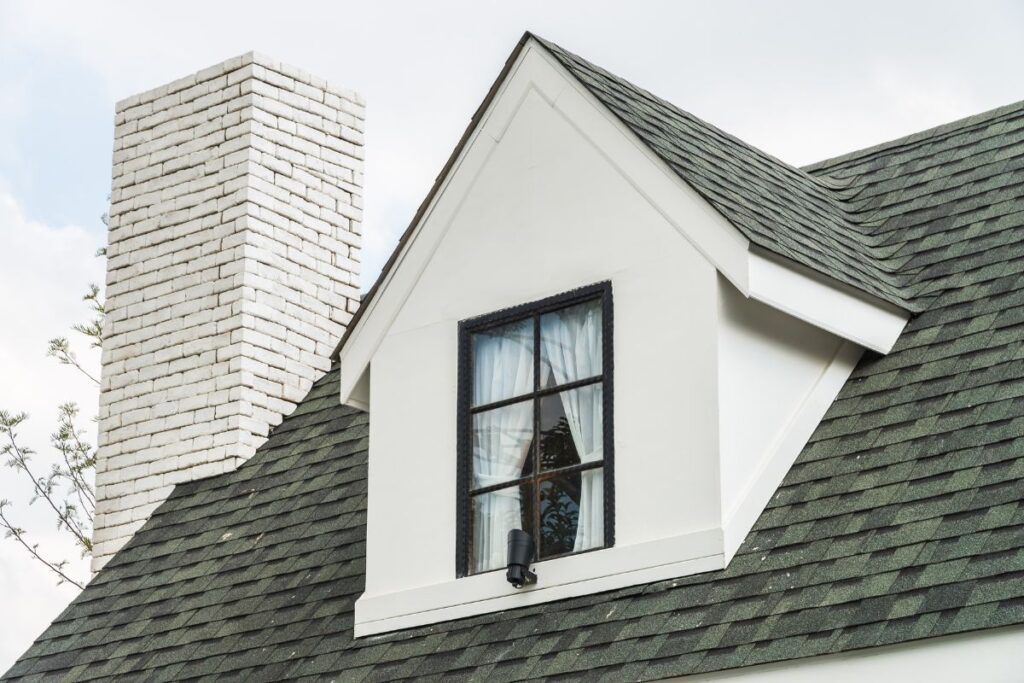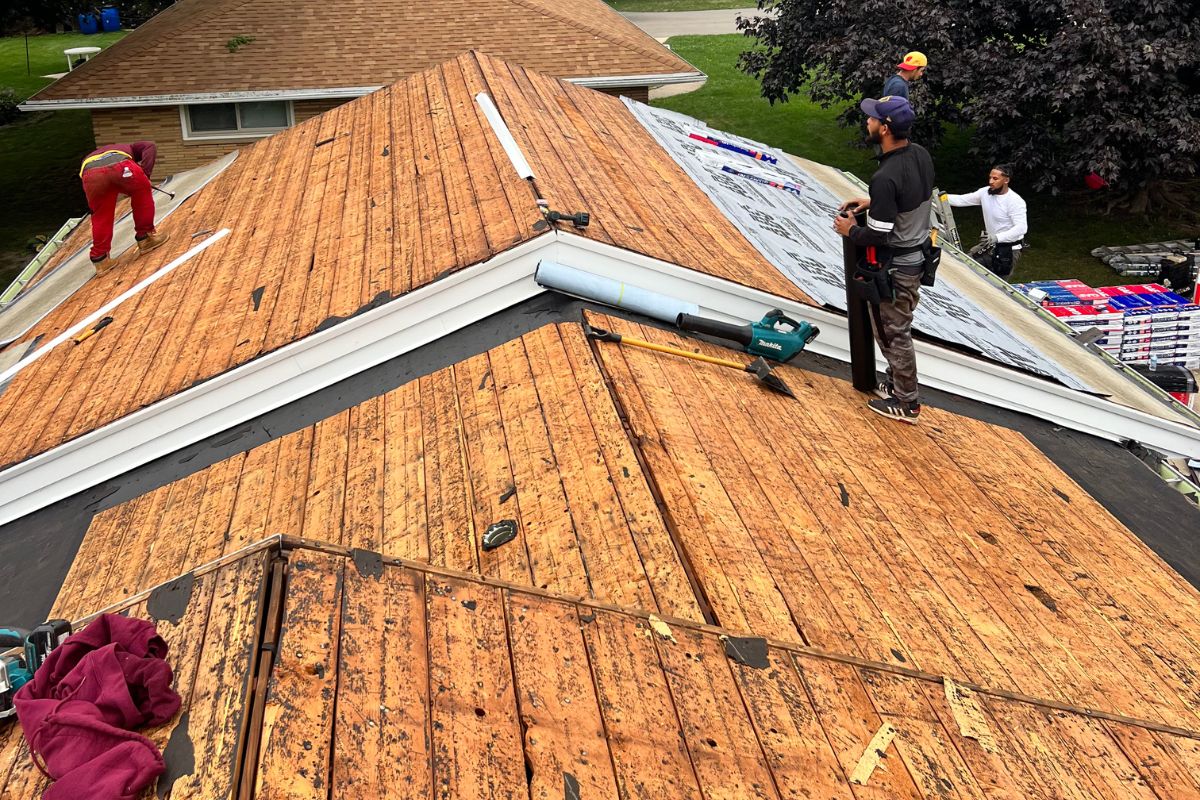Wisconsin’s harsh weather poses a real threat to your roof, causing leaks. You must detect the leaks in the attic early to ensure your roof’s integrity. Besides, detecting it early will prevent potential structural damage, avoid expensive repairs, and maintain a good living environment.
Check common signs such as water stains, mold, wet insulation, rusted nails, warped decking, dripping, and dark streaks. Check for sunlight through boards, ice buildup, damp vents, pooling water, and musty odours. Each of these can become very expensive unless you are aware enough to know what to watch out for and detect them at the first sign. Learn more about how to check roof leaks.
Why Attic Leaks Are a Common Problem in Wisconsin
Table of Contents
Toggle- Attic ventilation: Improper ventilation of the attic will trap heat and cause a buildup of moisture.
- Ice dams: Snow melts the base of the roof and then refreezes to clog up the drains.
- Thermal bridging: Compromised insulation causes heat to escape through the structurally weaked areas and creates an uneven snow melting pattern around the house.
- Ridge vents: Misaligned ridge vents are one of the most prevalent reasons leading to attic leakage.
- Snow load: The heavy snowfalls of Wisconsin put extra weight on the roofing materials for prolonged durations.

Visual Signs of a Roof Leak in the Attic
Water stains on roof sheathing or rafters
Old leaks often leave yellowish, greenish, or blackish patches around the roof sheathing and rafters, often appearing near the joints of the roofing structures as the leaks follow gravity.
Wet or sagging insulation
Insulation can become saggy or damp by absorbing water from a leak. While this issue needs attention, damaged insulation also makes it easier for mold to grow within the structure and eat away at the organic materials, such as wood and floorboards.
Mold or mildew patches
Mold or mildew patches on the attic are a clear indication of a faulty ventilation system. Higher moisture is the main reason for mold to grow. Active leaks can provide that moisture. So check for the leaks.
Rusted nails or metal fasteners
Signs of rust streaks trailing down wooden structures are a clear indication of poor ventilation. Warm air from the attic comes into contact with the cold nail, promoting rust and causing damage to the structure.
Warped or bowed roof decking
Absorbing moisture for prolonged periods of time makes the roof boards lose their shape, becoming bent or warped, which may not always be apparent by observing stains on the ceiling.
Active dripping or visible moisture on framing
Observing droplets on the rafter during or right after heavy rain is a clear indication of an ongoing leakage issue that needs to be repaired.
Discoloration or dark streaks on wood surfaces
Discoloration or dark streaks on wooden surfaces represent drip paths of water mixed with dirt or other debris.
Sunlight peeking through the roof boards or joints
Missing or damaged shingles, compromised flashing, faulty sealing, etc., may eventually create such a blatant issue. On the other hand, if the roof is compromised enough to let sunlight in, then the issues run deeper than they may appear.
Ice buildup inside the attic during cold weather
Excessive humidity or faulty insulation may appear as frost on nails and the roofboards. As the weather heats up, the ice will melt and simulate an actual water leakage.
Damp spots around attic vents or roof penetrations
Saggy and damp spots around the attic vents, roof penetrations, flashing, and skylights indicate a compromised waterproofing.
Water pooling near the attic floor or joists
Pooling of water indicates a serious water leakage. The pooled water not only warps the wooden structures over time but also creates a ground of pest infestation.
Rust or corrosion on attic hardware
Rust or corrosion on attic hardware indicates regular exposure to moisture. The structure is corroded over time, severely affecting the longevity of the home.
Saturated Insulation Around Plumbing or Vent Boots
If the insulation around the vent stacks and pipe boots is unusually damp, it is often a sign of damaged flashing or a rupture of the seals.
Cracking or Peeling Vapour Barriers
Cracking, peeling, or bubbling under the vapor barriers indicates excess moisture as a result of water leakage.
Non-Visual Warning Signs to Notice
Musty or moldy odor in the attic or upper rooms
A constant musty smell or an odor of wet wood may often appear before any visual indication of an issue. It is often caused by an excess of moisture in the air
Damp or humid air in the attic
Air trapped in the attic due to a faulty vent will feel unusually warm, heavy, and moist.
A dripping or tapping sound during or after rain
Unusual dripping or popping noises during the rainy season are a clear indicator of a leakage, even if not apparent.
Sudden spike in indoor humidity levels
Increased stickiness in the indoor air, or the increased condensation on the windows, is often a sign of a water leak.
Unusual temperature changes in upper rooms (hot or cold drafts)
Damaged insulation will let the outside heat/cold in contact with the indoors, causing sudden spikes or falls in the temperature
Electrical Issues or Flickering Lights in Upper Rooms
Flickering lights or electrical issues may indicate a water leakage near the electrical wiring, disrupting the air supply.
When to Check Your Attic for Leaks:
- Right after heavy rainfall, as it is far easier to detect issues
- At the beginning and end of each season, as routine checkups
- During snow snow-melting season, to detect snow-related damages.
- After a sudden spike in electricity bills as it may indicate structural damage
- When experiencing a sudden odor change or increased moisture in the house
Tools That Help Detect Roof Leaks in the Attic
- Thermal camera: helps detect cold spots and also moisture in the insulation
- Moisture meter: pinpoints the damp areas within the structure.
- Hygrometer: measures the elevated moisture levels in the air.
What to Do If You Find a Leak
- Contain the leak to prevent further damage
- Take photographs for referring to contractors
- Check for additional leaks or problems
- Dry up the area to prevent moisture from building up
- Call a licensed professional
Need Professional Help?
Contact Northern Generation to inspect your roof and for effective roof repair solutions. We are local, licensed and insured.









